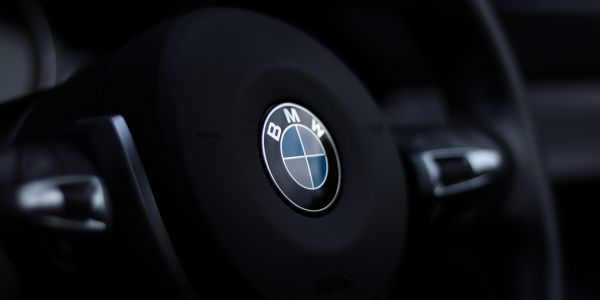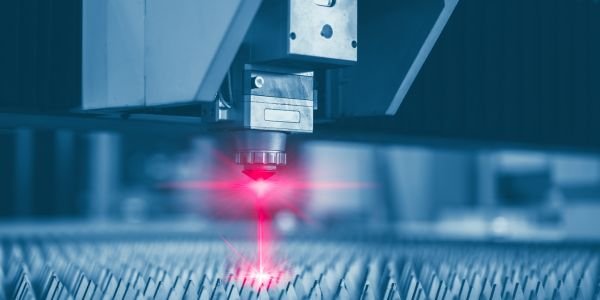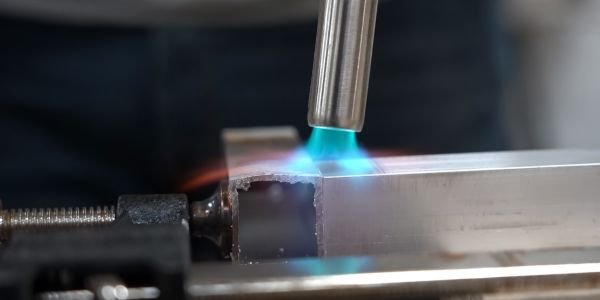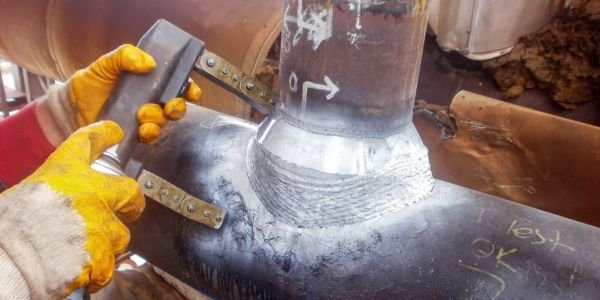Table of Contents
What are fasteners and their types?
Fasteners are a vital component in many industries, from construction to automotive, manufacturing to aerospace. They are essential for holding together different parts and structures, providing stability and strength. Fasteners come in a variety of shapes, sizes, and materials, each with its unique features and benefits.

Screws
Screws are the most common type of fastener, consisting of a threaded shank and a head. They are typically used for fastening two objects together, with the threads biting into the material and creating a secure connection. Screws come in a variety of materials, including steel, brass, and stainless steel. They also have different head types, such as flat, pan, and round heads, each with its specific purpose.
Wood Screws
Wood screws are a type of screw fastener designed for use with wood. They have a sharp point that allows them to penetrate the wood without the need for a pre-drilled hole. Wood screws have a coarse thread that provides a secure grip in the wood and come in different lengths and gauges.
Sheet Metal Screws
Sheet metal screws are a type of screw fastener designed for use with thin metal sheets. They have a sharp point that allows them to penetrate the metal without the need for a pre-drilled hole. Sheet metal screws have a fine thread that provides a secure grip in the metal and come in different lengths and gauges.
Machine Screws
Machine screws are a type of screw fastener designed for use in metal or other hard materials. They have a blunt tip and a threaded shaft that requires a pre-drilled hole to create a secure connection. Machine screws come in different lengths, gauges, and head types, including flat, pan, and round heads.
Self-Tapping Screws
Self-tapping screws are a type of screw fastener designed for use in soft materials such as plastics and wood. They have a sharp point and a thread that allows them to tap their threads into the material without the need for a pre-drilled hole. Self-tapping screws come in different lengths, gauges, and head types, including flat, pan, and round heads.
Lag Screws
Lag screws are a type of screw fastener designed for use in heavy-duty applications such as building construction and furniture making. They have a hexagonal head and a pointed tip that allows them to penetrate the material without the need for a pre-drilled hole. Lag screws have a coarse thread that provides a secure grip and come in different lengths and gauges.
Concrete Screws
Concrete screws are a type of screw fastener designed for use in concrete, brick, and masonry. They have a threaded shaft and a pointed tip that allows them to penetrate the material without the need for a pre-drilled hole. Concrete screws come in different lengths and gauges and are available with different head types, including hex, flat, and round heads.
Set Screws
Set screws are a type of screw fastener designed for use in machinery and equipment. They have a threaded shaft and a flat end that allows them to be screwed into a threaded hole to create a secure connection. Set screws come in different lengths and gauges and are available with different head types, including flat and hex heads.
Bolts
Bolts are the second type of fasteners and are similar to screws, but they typically have a larger diameter and do not have a tapered shank. Instead, they have a threaded end and a non-threaded shank. Bolts are used with nuts and washers to create a secure connection between two objects. They are often made of high-strength materials like steel or titanium and can be used in high-stress applications
Hex Bolts
Hex bolts, also known as hexagon head bolts or cap screws, are the most commonly used bolts. They have a hexagonal head, which requires a wrench or a socket for tightening and loosening. Hex bolts come in various lengths, diameters, and materials, making them ideal for a wide range of applications, including construction, automotive, and manufacturing.
Carriage Bolts
Carriage bolts, also known as coach bolts, are typically used in wooden structures, such as decks and playground equipment. They have a round, smooth head and a square neck that prevents them from turning when tightened. Carriage bolts are easy to install and remove and offer a secure and stable connection.
Flange Bolts
Flange bolts are designed with a flange that distributes the load over a larger area. The flange also acts as a washer, eliminating the need for separate washers. Flange bolts are commonly used in automotive and industrial applications, where a secure and stable connection is essential.
Eye Bolts
Eye bolts are used for lifting heavy objects or for securing ropes and cables. They have a circular loop at one end, which allows them to be easily attached to ropes or chains. Eye bolts are available in various sizes and materials, making them ideal for a wide range of lifting applications.
Lag Bolts
Lag bolts, also known as lag screws or coach screws, are designed for heavy-duty applications, such as construction and woodworking. They have a sharp, pointed tip that enables them to be easily drilled into wood or other soft materials. Lag bolts have a hexagonal head that requires a wrench or a socket for tightening and loosening.
U-Bolts
U-bolts are U-shaped bolts that are commonly used to secure pipes and tubes. They have a threaded end that allows them to be easily tightened and loosened with a wrench or a socket. U-bolts come in various sizes and materials, making them ideal for a wide range of pipe and tube applications.
Stud Bolts
Stud bolts, also known as threaded rods, are used to secure two objects together. They have threads on both ends, allowing them to be screwed into one object and then fastened to another object with a nut. Stud bolts are commonly used in construction, automotive, and manufacturing applications.
Nuts
Nuts are used in combination with bolts to provide a secure connection. They come in a variety of shapes and sizes, including hex, square, and wing nuts. Nuts can be made from different materials, including steel, brass, and aluminum.
Hex Nut:
A hex nut, also known as a hexagonal nut, is the most commonly used nut fastener. It has six sides and is designed to fit onto a threaded bolt or rod. Hex nuts are used to secure machine screws, bolts, and other fasteners. They are available in different sizes, materials, and finishes.
Lock Nut:
A lock nut is a type of nut that is used to prevent the loosening of a bolt or nut due to vibration or other factors. It has a plastic or metal insert that grips onto the threads of a bolt or rod. Lock nuts are commonly used in automotive, aerospace, and other applications where vibrations are common.
Wing Nut:
A wingnut is a type of nut that has two protruding wings that allow it to be tightened or loosened without the use of tools. It is commonly used in applications where frequent adjustments are necessary, such as in furniture, lighting fixtures, and musical instruments.
Flange Nut:
A flange nut is a type of nut that has a wide circular base or flange that provides a larger bearing surface. It is used to distribute the load over a larger area and prevent damage to the material being fastened. Flange nuts are commonly used in automotive and plumbing applications.
T-Nut:
A T-nut is a type of nut that is used to create a threaded hole in wood, plastic, or other materials. It has a flat base with prongs that penetrate the material and hold it in place. T-nuts are commonly used in furniture and cabinetry applications.
Cap Nut:
A cap nut, also known as an acorn nut or crown nut, is a type of nut that has a domed top that covers the end of a bolt or rod. It is used to provide a finished appearance and prevent accidental contact with the end of the fastener. Cap nuts are commonly used in automotive and decorative applications.
Washers
Washers are used to distribute the load of a fastener and prevent damage to the surface of the material. They are placed between the fastener and the surface to create a smooth and even load distribution. Washers can be made from different materials, including steel, brass, and nylon.
There are several different types of washers that are commonly used in fastening applications.
Flat Washers
Flat washers are the most common type of washer and are used in a variety of applications. They are thin, circular washers that have a uniform thickness and a smooth surface.
The main function of a flat washer is to distribute the load of the fastener over a wider surface area, which can help prevent damage to the material it is attached to. Flat washers are available in a variety of materials, including steel, stainless steel, brass, and nylon.
Split Lock Washers
Split lock washers, also known as helical spring washers, are designed to prevent loosening of fasteners. These washers have a split at one point in the circumference, which causes them to exert a spring-like force when compressed. This force can help to prevent the nut or bolt from loosening over time due to vibrations or other external forces.
Belleville Washers
Belleville washers, also known as conical washers, are designed to provide a high amount of spring tension when compressed. These washers have a conical shape with a convex side and a concave side. When compressed, the convex side flattens and the concave side bulges out, which creates a spring-like effect. Belleville washers are commonly used in applications where a high amount of tension is required, such as in bolted joints that are subject to thermal expansion and contraction.
Wave Washers
Wave washers, also known as spring washers, are designed to exert a spring-like force when compressed. These washers have a wavy shape, which allows them to provide a high amount of tension even in applications where there is limited space. Wave washers are commonly used in applications where a high amount of tension is required, such as in electrical connections or in the automotive industry.
Toothed Lock Washers
Toothed lock washers, also known as star washers, are designed to prevent the loosening of fasteners due to vibrations or other external forces. These washers have a series of teeth or serrations around their circumference, which can grip into the material it is being attached to. This can help prevent the nut or bolt from loosening over time.
Rivets
Rivets are used to permanently fasten two materials together. They consist of a cylindrical shaft with a head on one end and a tail on the other. The tail is inserted into a pre-drilled hole, and then the head is formed to create a secure connection. Rivets are commonly used in aerospace and automotive industries due to their high strength and durability.
The different types of rivets and their specific applications.
Solid Rivets:
Solid rivets are one of the oldest and most reliable types of rivets. They are made from a single piece of material, usually aluminum or steel, and are designed to be installed using a hammer or pneumatic tool. Solid rivets are typically used in heavy-duty applications where strength and durability are paramount, such as in the construction of aircraft or heavy machinery.
Blind Rivets:
Blind rivets, also known as pop rivets, are a type of fastener that can be installed from one side of the material. They are comprised of a hollow body, a mandrel, and a nail-like pin. When the mandrel is pulled through the body of the rivet, it deforms the body and creates a strong, permanent joint. Blind rivets are commonly used in applications where access to both sides of the material is limited, such as in the construction of automotive body panels.
Tubular Rivets:
Tubular rivets are a type of hollow rivet that is used to join two pieces of material together. They are commonly made from brass, aluminum, or steel and are often used in leatherworking, as well as in the construction of bags and clothing. Tubular rivets are installed by deforming the end of the rivet with a hammer or punch.
Split Rivets:
Split rivets, also known as bifurcated rivets, are a type of fastener that is used to join two pieces of material together. They are made from a single piece of material that is split at one end, creating two prongs. The prongs are then inserted into a hole in the material and are bent over to create a secure joint. Split rivets are commonly used in the construction of leather goods and in the automotive industry.
Drive Rivets:
Drive rivets are a type of fastener that is used to join two pieces of material together. They are made from a single piece of material and are installed using a hammer or pneumatic tool. Drive rivets are commonly used in the construction of sheet metal, as well as in the automotive industry.
Anchors
Anchors are used to provide a secure connection to a surface that cannot support the weight of the fastener. They are inserted into a pre-drilled hole and then expand to create a secure connection. Anchors come in a variety of shapes and sizes, including sleeve anchors, wedge anchors, and toggle bolts.
Clips
Clips are used to hold two objects together without the need for a fastener. They can be made from different materials, including plastic and metal, and come in a variety of shapes and sizes. Clips are commonly used in the automotive and electronics industries.
Pins
Pins are used to hold objects together and are available in various shapes and sizes. Pins can be used as a temporary or permanent fastener and are commonly used in the automotive, aerospace, and machinery industries.
Nails
Nails are used to join objects together and are available in various shapes and sizes. Nails are commonly used in construction and woodworking industries.
Also, read Dynamo in Automobile Engineering































